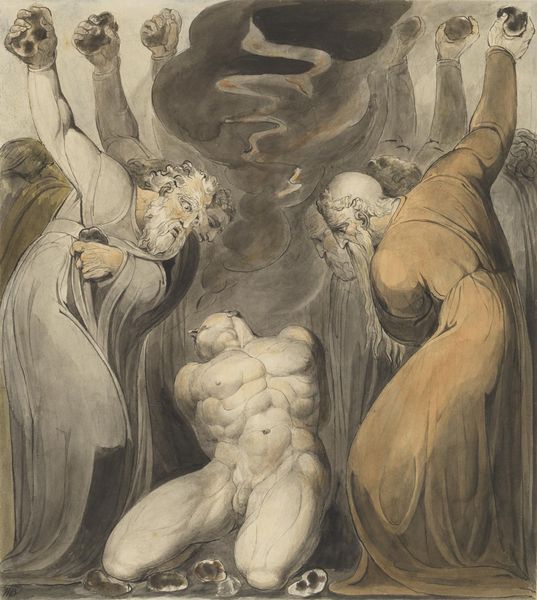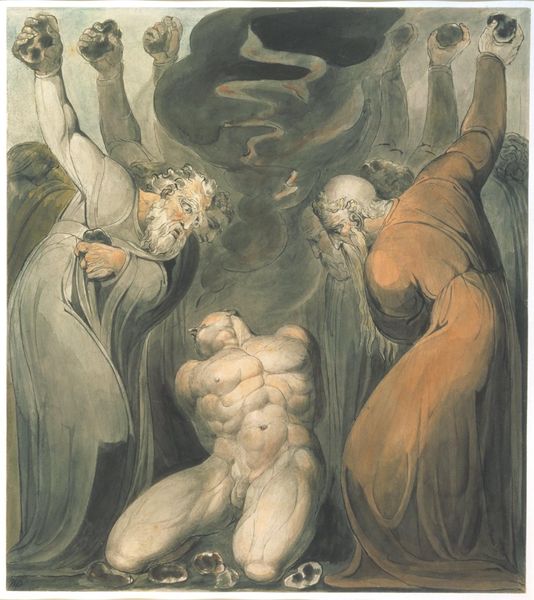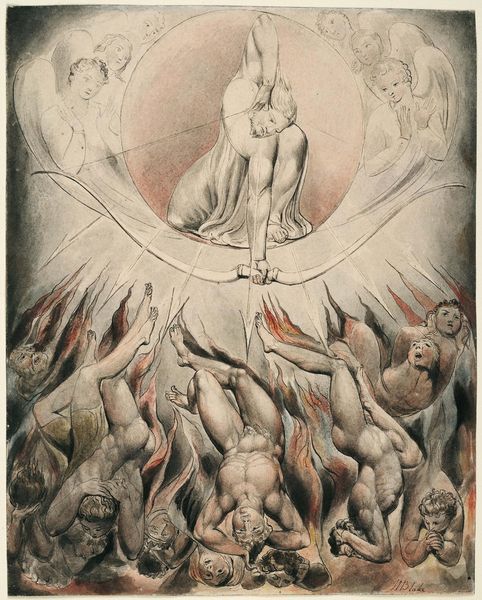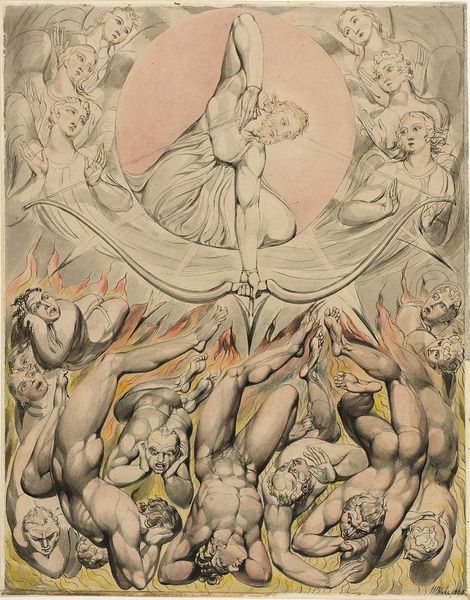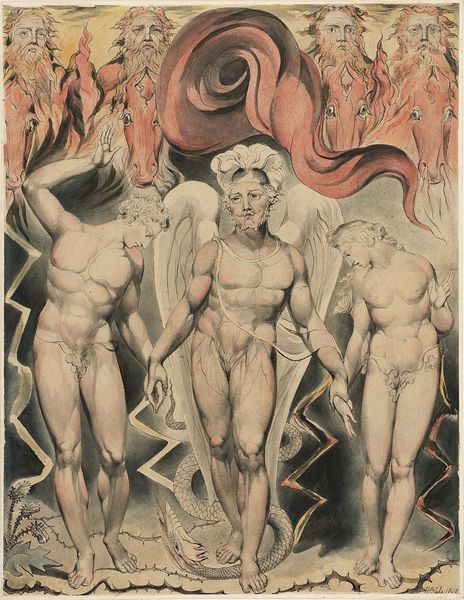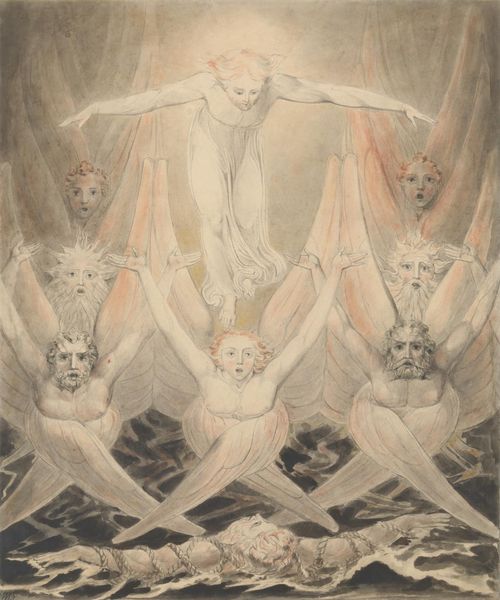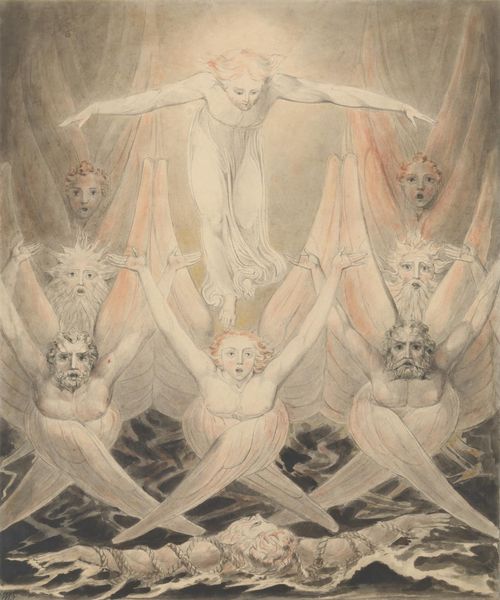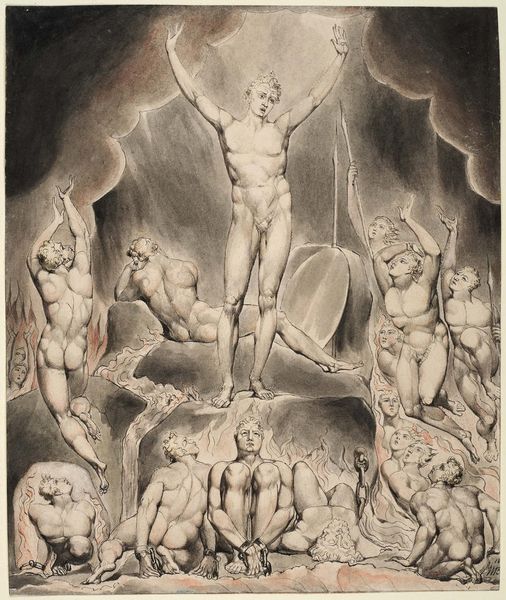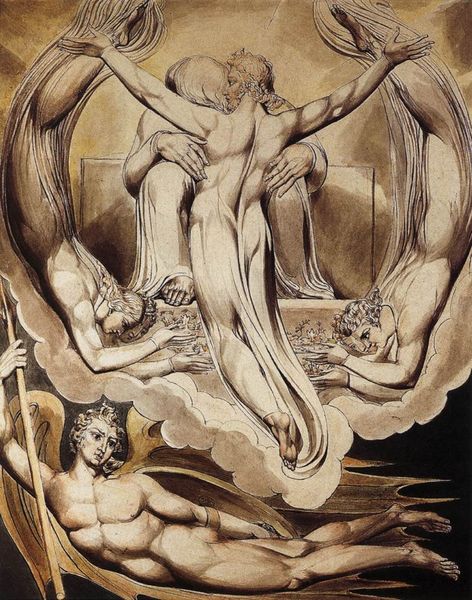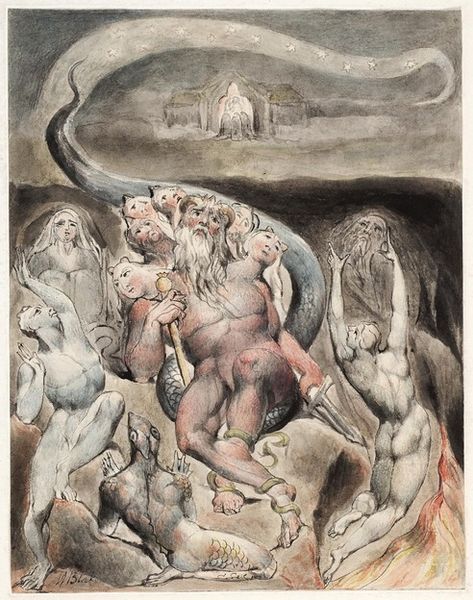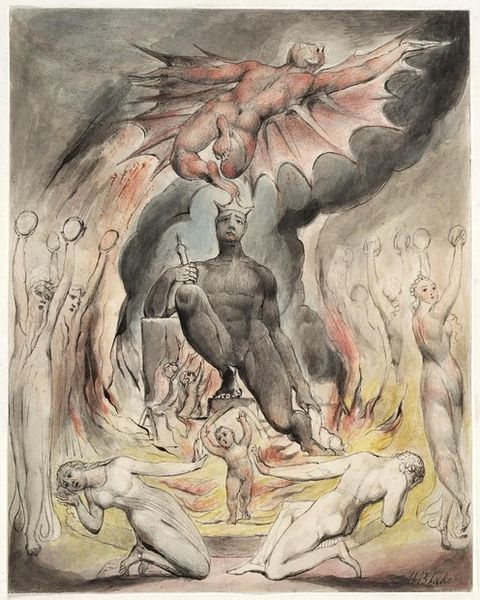
Dimensions: support: 384 x 340 mm
Copyright: NaN
Curator: Oh, the shadows in this image—they pulse! It’s William Blake’s "The Blasphemer," held here at the Tate. Editor: I find the stark contrast between the hyper-muscular figure and the drab palette fascinating. It feels like labor and the body under assault. Curator: Exactly! Those stones being raised by the crowd—instruments of labor turned into tools of condemnation. Blake was so good at capturing the body’s emotional landscape. Editor: And the social landscape. The stones themselves would have been quarried, shaped, carried... the everyday transformed into something brutal. Curator: It's a disturbing vision, yet so powerful. Blake saw the divine spark in everything, even in the condemned. Editor: Blake’s medium—watercolor and pen—belies the heaviness of the subject. It makes you wonder about the accessibility of art as protest. Curator: The Blasphemer holds a mirror to our own judgments, doesn’t it? Editor: Yes, and to the often-invisible processes that shape those judgments.
Comments
Join the conversation
Join millions of artists and users on Artera today and experience the ultimate creative platform.
tate 6 months ago
⋮
This powerful watercolour illustrates lines from Leviticus in the Old Testament. It shows the son of an Israelite woman being stoned for blasphemy. God had told Moses that anyone who ‘blasphemeth the name of the Lord... shall surely be put to death, and all the congregation shall certainly stone him.’ This picture was one of a group of 135 drawings and paintings of biblical subjects by Blake, commissioned by his most loyal patron, Thomas Butts. Gallery label, September 2004
